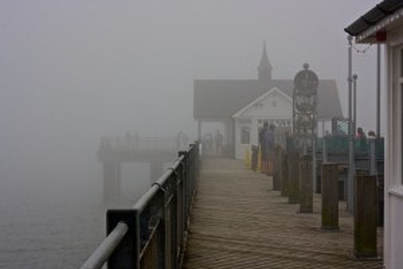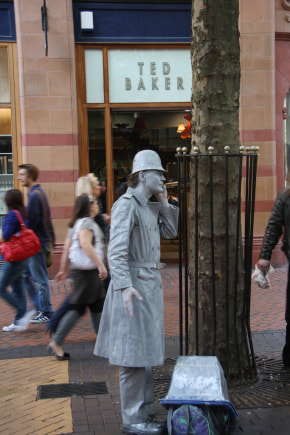 A Suffolk summer holiday meant a visit to Southwold and a stroll along the pier. This has been greatly refurbished to recreate the attractions of old – the seats in windbreakers, the cafes and shops, and the penny arcade (this one is rather quirky, and it requires old pennies to operate the games). On this visit the pier disappeared into a sea mist, giving it a rather eerie sense. It struck me that the hey-day of the seaside pier had also disappeared into the mists of time and that this attempt at commercial nostalgia does not quite make it. “It’s not like it used to be”. Working, as I am at present, with folk in care homes I grapple with the issues of memory and its loss. Memories of times past are so important and often vivid, yet for many it is the memory that is fading and life is lived very much ‘in the moment’. Someone might well say “Memories are all I’ve got – and I’ve lost those…!” which seems tragic, but it simply heightens the importance of enabling people in such a situation discover the life that they have now. It is not all lost in the mists of time.
0 Comments
 I imagine that most have, at some time, stood on a crowded pavement watching a living statue’ to see if we can spot any movement. Is there life? Is it a real person? Then they move, perhaps to go for lunch or to take a call on their mobile. In ‘statue mode’ one wonders why that particular image is portrayed. In ‘human mode’ one begins to wonder who the real person is. Why are they doing this? Where do they live? Is it a gift? Do they get bored? How long does it take to wash the paint off? Has their Mum suggested they get a ‘proper job’? Most of us are very good at hiding the personal and presenting the world with someone ‘not quite real’. Very often this is so that we fit in with a particular group of people, but then we get to the point where people wish to see the real person and discover this is not the person they have met! In the setting of a care home it is all too easy for visitors to see the ‘drowsy old person’ who needs a lot of care, struggles to get about or recall what time or what day it is. However, if you stay long enough to have a conversation and get to know the ‘real person’ one can discover rich experience and personality – “It’s the real me! |
Archives
March 2024
|
 RSS Feed
RSS Feed
